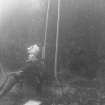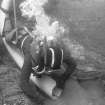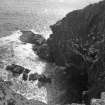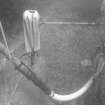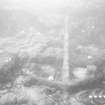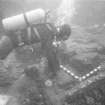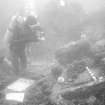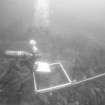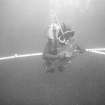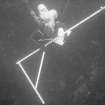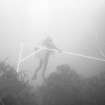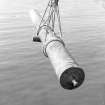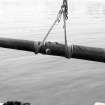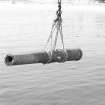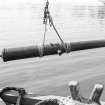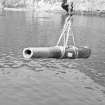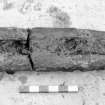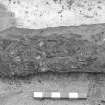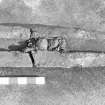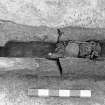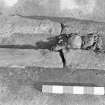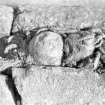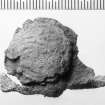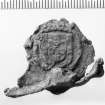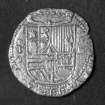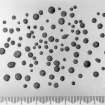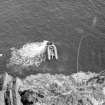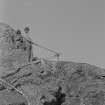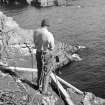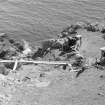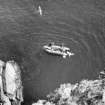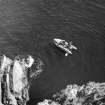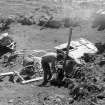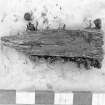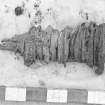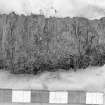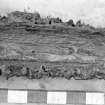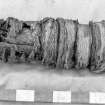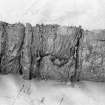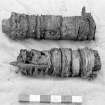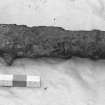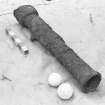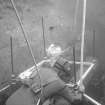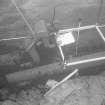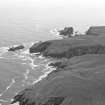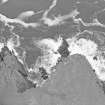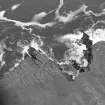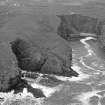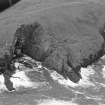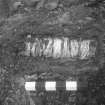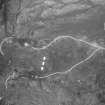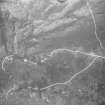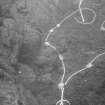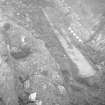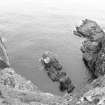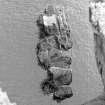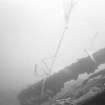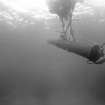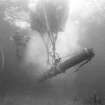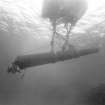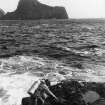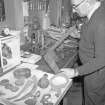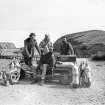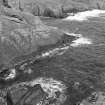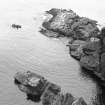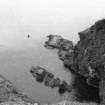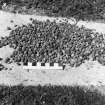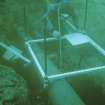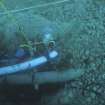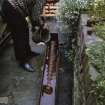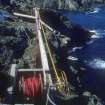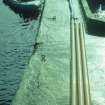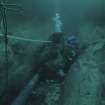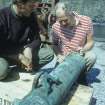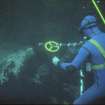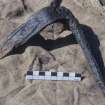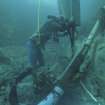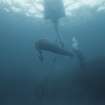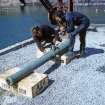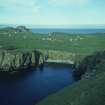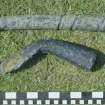Excavation
Date 1970 - 1977
Event ID 935404
Category Recording
Type Excavation
Permalink http://canmore.org.uk/event/935404
El Gran Grifón investigation, 1970-1977
El Gran Grifón was a Baltic hulk from Rostock engaged, like many other Hanseatic trading vessels, in carrying naval supplies to Spain during the run-up to the Armada campaign against England. In March 1587 she berthed at San Lucar, where she was embargoed to take part in the invasion of England. In due course she sailed to Lisbon, where the fleet was assembling, and on 7 May 1588 a muster shows that she had been assigned as flagship of the Urca (supply ships) squadron under Juan Gomez de Medina. She was rated at 650 tons and carried 38 guns, including 8 bronze pieces which were added at Lisbon. 286 men were listed on board when she sailed, 43 of them seamen and the rest soldiers.
During the campaign she was hotly involved in the fighting on several occasions. She became separated from the main fleet during the ‘north-about’ retreat around the British Isles and was eventually wrecked on Fair Isle. Most of her people survived and after many tribulations some of them, including Gomez de Medina, returned to Spain. When they arrived at Anstruther in Fife a witness described them as ‘for the most part young beardless men, sillie, trauchled, and hungered’ while on passing through Leith it was noted that they had ‘saved their treasure and are come hither unspoiled’.
Some salvage of the wreck was carried out in 1728, in the mistaken belief that it was the flagship of the whole Armada and carried a fortune in treasure. At least two bronze guns were recovered at this time. The wreck was remembered in island tradition until modern times, its site being pointed out by Mr Jerome Stout of Leogh to Colin Martin in 1970 as the cliff-girt creek of Stroms Hellier near the SE end of the island (HZ 211 700). There, on 9 June 1970, the wreck was located on the SE side of the rock spine which runs through the central axis of Stroms Hellier by a team consisting of Colin Martin, Sydney Wignall, Chris Oldfield, and Simon Martin.
Shetland Council, which held a seabed lease of the site from the Crown Estates Commission, gave permission for excavation, which was conducted over the remainder of that summer. The work was strongly supported by the Shetland Museum, with which all recoveries were lodged through the good offices of its Curator, Mr Tom Henderson. Mr Henderson provided his skilled conservation services throughout the project.
A short monitoring visit to the site was made by Colin Martin in 1974, supported by Alec Crawford and Simon Martin, and in 1977, under the auspices of the Institute of Maritime Archaeology at St Andrews University, a final season of excavation was conducted under the direction of Colin Martin. Other team members were Paula Martin, Keith Muckelroy, Tony Long, and Andrew Fielding.
The 1970 excavation was focussed on the shoreward gully close to Point Saider on the south side of Stroms Hellier. This revealed a concentration of guns, including a bronze media sacre (about a 3-pounder) and the broken-off end of a larger-calibre bronze piece, identified as a media culebrina (about a 9-pounder). Three intact cast-iron pieces were also present, two of which were badly abraded. A fragment of a fourth was also found. The well preserved piece was stripped of concretion so that its profile could be recorded. Three wrought-iron pieces, two identified as iron-shotted esmeriles and a third as a stone-throwing falcon pedrero, were also recorded. Also present were three wrought-iron breech-blocks for light swivel pieces. The two bronze pieces, the breech blocks, one of the esmeriles and the falcon pedrero were raised for conservation and display in the Shetland Museum.
Also recovered was one of the ship’s wrought-iron rudder pintles, a bronze sheave from a pulley block, a curved iron blade identified as a shear hook for cutting down an enemy’s rigging, scraps of brass and pewter, and a silver coin of Philip II minted at Toledo. Quantities of iron roundshot were also recovered.
Attention in 1977 was focused on the long seaward gully lying on the SE side of the central spine. At its landward end the gully is narrow and its bottom largely free of shingle, revealing a much abraded and partially sectioned iron gun, four lead ingots, and pockets of lead shot gathered in crevices in the bedrock. As the gully widens to seaward its bottom becomes filled with shingle, soon extending to a depth of about 2m. It was decided to remove this shingle which, it was felt, would contain stratified material from the wreck. Since significant volumes of spoil were involved an air-lift, serviced by a compressor on the cliff top, was installed.
Initially careful excavation revealed that the shingle overburden was entirely devoid of archaeological material. Items from the wreck, mainly iron guns and roundshot but including two more lead ingots and more lead shot, had evidently worked their way through the shingle to the gully bottom, where they had stabilised and concreted into a continuous matrix. The surface of this matrix was in a constant/regular state of abrasion, apparently due to shingle movement in rough weather, revealing in its surface sectioned iron guns and roundshot. At one point the remaining part of the bronze media culebrina, the muzzle end of which had been recovered in 1970, lay on top of the matrix. There were also three wrought-iron breech-blocks for esmeril-type guns. The iron guns were recorded in situ, the bronze piece and breech-blocks raised, and a sample of roundshot recovered for statistical analysis.
The paucity of small finds recovered is explained by extensive salvage at the time of of the wreck and during the 18th century, and by an extremely dynamic and abrasive site environment. Although we know from documentary sources and other Armada wrecks that large quantities of pottery were issued to the fleet, none whatever has been noted on the wreck-site. This can only be because its fragility and low mass, which would render it prone to natural movement within the shingle, has abraded it to nothing.
However the varied collection of ordnance-related material has been of considerable significance in reaching a fuller understanding of the nature and effectiveness of Armada gunnery, especially in relation to its second-line ships (see Martin, 1983).
All the recovered finds are in the care of the Shetland Museum.
References
Martin, C., 1972, El Gran Grifón, an Armada wreck off Fair Isle, International Journal of Nautical Archaeology 1, 59-71.
Martin, C., 1975, Full Fathom Five: the Wrecks of the Spanish Armada. London.
Martin, C., 1983, The Equipment and Fighting Potential of the Spanish Armada. Unpublished PhD thesis, University of St Andrews.
Martin, C., 1998, Scotland’s Historic Shipwrecks, Chapter 2 (pp.28-45). London.









































































































